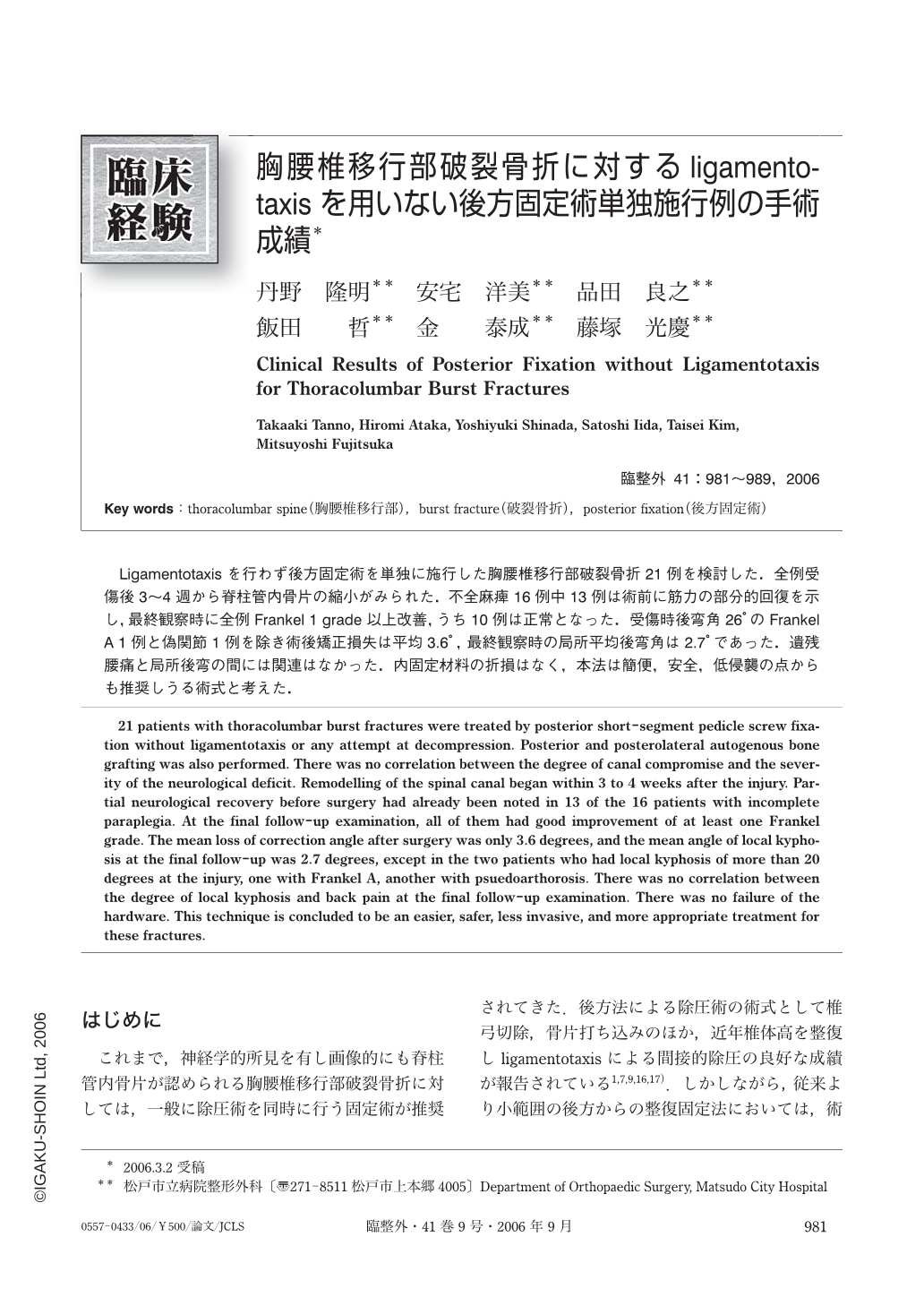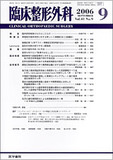Japanese
English
- 有料閲覧
- Abstract 文献概要
- 1ページ目 Look Inside
- 参考文献 Reference
Ligamentotaxisを行わず後方固定術を単独に施行した胸腰椎移行部破裂骨折21例を検討した.全例受傷後3~4週から脊柱管内骨片の縮小がみられた.不全麻痺16例中13例は術前に筋力の部分的回復を示し,最終観察時に全例Frankel 1 grade以上改善,うち10例は正常となった.受傷時後弯角26°のFrankel A 1例と偽関節1例を除き術後矯正損失は平均3.6°,最終観察時の局所平均後弯角は2.7°であった.遺残腰痛と局所後弯の間には関連はなかった.内固定材料の折損はなく,本法は簡便,安全,低侵襲の点からも推奨しうる術式と考えた.
21 patients with thoracolumbar burst fractures were treated by posterior short-segment pedicle screw fixation without ligamentotaxis or any attempt at decompression. Posterior and posterolateral autogenous bone grafting was also performed. There was no correlation between the degree of canal compromise and the severity of the neurological deficit. Remodelling of the spinal canal began within 3 to 4 weeks after the injury. Partial neurological recovery before surgery had already been noted in 13 of the 16 patients with incomplete paraplegia. At the final follow-up examination, all of them had good improvement of at least one Frankel grade. The mean loss of correction angle after surgery was only 3.6 degrees, and the mean angle of local kyphosis at the final follow-up was 2.7 degrees, except in the two patients who had local kyphosis of more than 20 degrees at the injury, one with Frankel A, another with psuedoarthorosis. There was no correlation between the degree of local kyphosis and back pain at the final follow-up examination. There was no failure of the hardware. This technique is concluded to be an easier, safer, less invasive, and more appropriate treatment for these fractures.

Copyright © 2006, Igaku-Shoin Ltd. All rights reserved.


